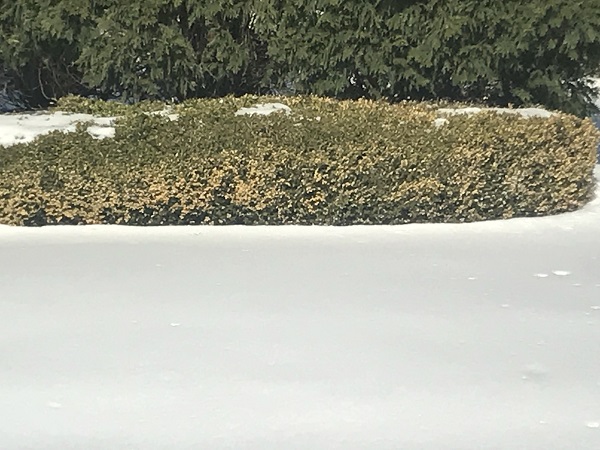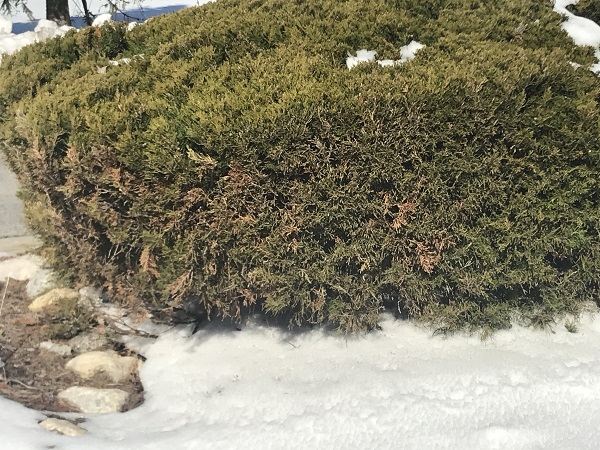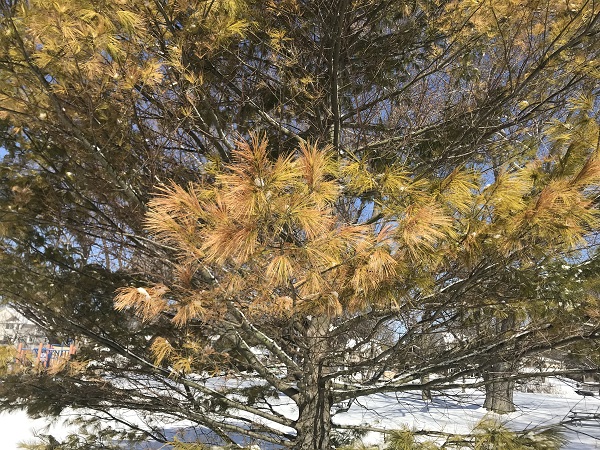Winter Burn
Winter burn is a common problem noticed on conifers in Wisconsin that are exposed to extreme winter conditions. It is most commonly seen on plants grown in open, unprotected areas. It can also be seen on deciduous trees if there is a very sudden cold snap when the trees have leaves on them.
Winter burn usually presents as browning areas on the plant that move from the outside areas towards the inward needles/leaves of the plant. It is also most common to see the damage on the south and west sides of the plant.
Causes of Winter Burn:
- Plants with shallow or under developed root systems do not efficiently take up water.
- Warm fall temperatures can delay the onset of dormancy. When there is a rapid cold weather plants are not prepared.
- On sunny winter days plants facing the sun can begin to transpire (naturally move water through the plant and out through the foliage). Because there is no water available in the frozen ground for the plant to uptake and replace the lost water the foliage begins to dry and brown.
- Strong winter winds cause the plant to have more water loss.
- Colder than average winters as well as longer winters can cause winter burn.
- Cold weather after an initial warm-up can also cause winter burn.
Treatment/Prevention Options:
- Prune out brown, dead, damaged and dying areas in mid-spring after new growth is produced.
- Some larger pines will need nothing done because they push out new growth from the branch ends and will naturally deal with the problem.
- Removal/replacement is sometimes needed if the plant is too heavily damaged.
- Proper watering can help to keep plants hydrated when going into the winter months.
- Keeping plants on a proper Plant Health Care program (Insect and Disease management, fertilizer/root stimulant treatments) will help trees to stay healthy.
- Winter protection such as wrapping plants with burlap, canvas and other protective materials can help to prevent winter burn.
- Treating trees with Antidessicants can help to lessen water loss and help plants to deal with winter weather.




